Taisho Retro - Memories of Old Japan at Ginzan Onsen, Yamagata

Ginzan Onsen is a wonderful hot springs town, famous for its traditional architecture and one of the top travel destinations in Tohoku. This article introduces some of the charms of Ginzan Onsen, from famous ryokan to activities and local souvenirs.
These days, a visit to Ginzan Onsen is hardly an excursion off the beaten path, but it is a delightful trip into the past. Located in a remote valley, the town looks like a historic movie set and a visit at any time of the year will be unforgettable.
Ginzan Onsen - Especially Picturesque in Winter
In winter, the scenery is at its most impressive. This area of Japan gets over two meters of heavy snow during the season and you can enjoy the experience driving through the snow-covered countryside before finally arriving at Ginzan, located at the end of route 188 from Obanazawa, Yamagata prefecture.
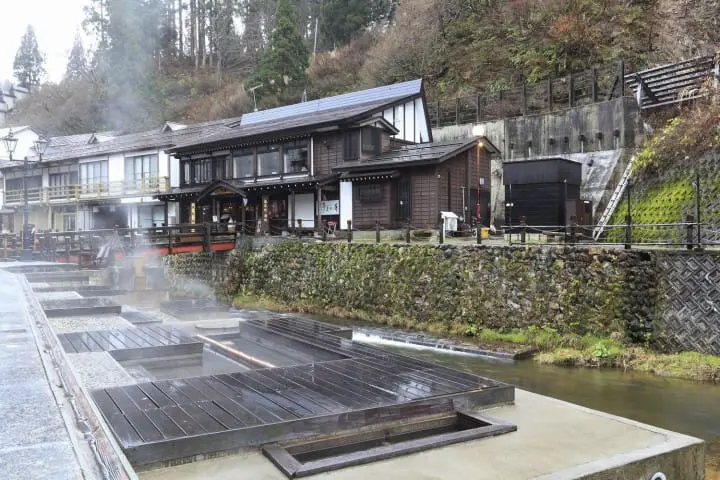
©JNTO
The narrow streets are barely wide enough for cars, so after parking at the entrance to Ginzan you stroll down the hillside to the village. The Ginzan River flows through a narrow gorge and, in winter, steam rising through the snow looks especially dramatic.
The contrast created between the Taisho period wooden ryokan buildings with their promise of relaxing hot baths, delicious food and warm sake and the harsh winter outside is striking, particularly at night. During the summer months, it is possible to explore the trail to a park past the waterfall and the disused silver mine that gives the town its name.
Elegant Ryokans in Ginzan Onsen
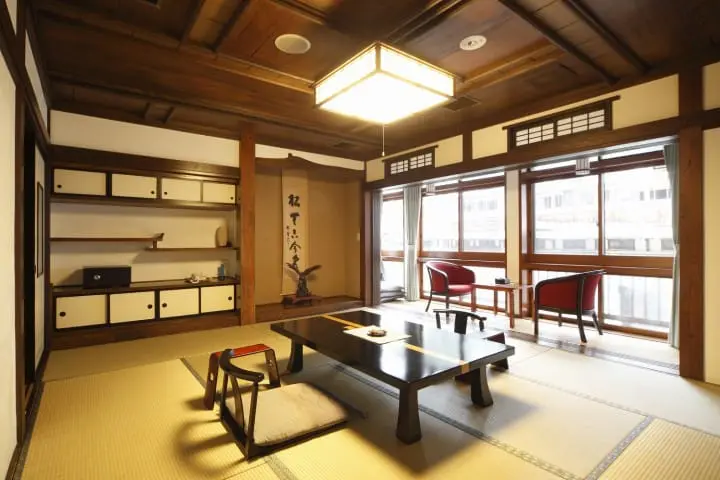
©JNTO
It’s hard to pick among the hotels. Notoya (pictured above) is a culturally listed building and was featured in the very popular 1983 NHK drama “Oshin” as the place where Oshin’s mother went to earn a living.
Ginzansou offers outdoor baths (rotemburo) and hot stone baths, Itoya has beautifully presented meals and Fujiya radiates serenity from its delicately modern renovation. These ryokans offer various arrangements for bathing: baths shared with other hotel guests, baths that can be reserved for private use (nice for a family), and baths in your own room where you can soak to your heart’s content.
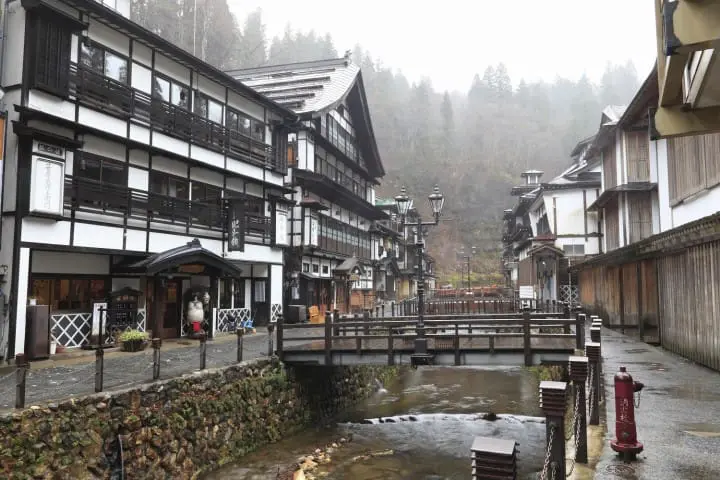
©JNTO
The area just beyond the town is called Shirogane Park (Platinum Silver Park). Photographers and hikers can decide how deep into the woods they care to venture. The foliage and range of outdoor interests change according to the time of year and time of day. Included are the evocative sounds of frogs and cicadas, fireflies on hot summer nights, and even diving kingfishers (kawasemi). A 22-meter waterfall gushes from the rocks by the park.
Highly Recommended! Hot Spring Baths
"Onsen" means natural "hot spring". Onsen bathing is a form of relaxation and has nothing to do with soaping up and personal care. That part takes place beforehand. A shower area, amply furnished with soap, shampoo, small bathing stools and buckets is provided for actually cleaning the body. It is required etiquette to wash carefully before entering a bath shared by others.
For visitors not staying at the ryokans, there are two public baths open between 8:00 AM and 17:00 PM. (They can be used for a fee of 500 yen or 300 yen respectively.) A few of the hotels also permit the use of their baths between 10:00 AM and 14:00 PM. There is an outdoor public footbath (ashiyu) by the river where you can people-watch while warming your feet and absorbing the atmosphere.
The Takimikan rotemburo has a view of the waterfall and the ryokan offers a day-visitor schedule whereby you can book times for the onsen plus a soba lunch. Two of the ryokans (Kosekiya and Ginzansou) allow guests to use both onsen baths freely until 8:30 PM.
Hotel guests wander about in yukata and geta to cool down after hot baths and browse the souvenir shops.
Local Food and Souvenirs
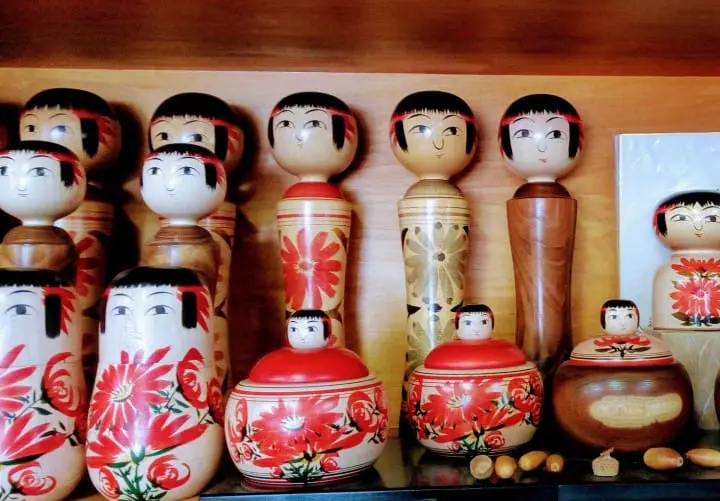
Kokeshi dolls are a representative souvenir from Ginzan. They are distinguished by their big, open eyes. There is no industry apart from the hotel business, so the whole town is oriented to relaxation and the restoration of body and mind.
Foods sourced locally in Yamagata prefecture are excellent. Apart from the sashimi and other dishes customary in ryokans across Japan, seasonal wild vegetables and mushrooms, fruits, freshwater fish, soba and tender Yamagata beef are served.
From 8:30 PM to 9:00 PM on Saturday evenings in the summer, intimate performances of the Hanagasa Ondo take place on the bridge over the river. This folk song (min'yo) has become identified with Yamagata prefecture. Performers make full use of their straw hats in a lively traditional dance accompanied by drum music, and visitors are encouraged to join in. The wide-brimmed farmers’ hats are decorated with red safflower-shaped blossoms and the theme is related to building irrigation works for rice fields 100 years ago.
The Charm of Ginzan Onsen at Night

©JNTO
Since Taisho times, this village has been a hidden getaway. At night, the romantic, old-fashioned street lamps are lit and many people can be seen outside with their cameras. The hotels provide visitors with hooded winter coats, boots and umbrellas so you can feel cared for and comfortable when outside too. Ginzan is a wonderful setting for soaking in warm baths, walking, eating well, sleeping well, meditating and replenishing the spirit. Sometimes that’s just what we need.
According to the season and weather, there is skiing or snowboarding at the Hanagasa and Akakura ski slopes, and hiking or fruit picking among other activities and places to visit that will make a trip to this part of Yamagata prefecture even more memorable.
English teacher and editor/proofreader living in Tohoku.













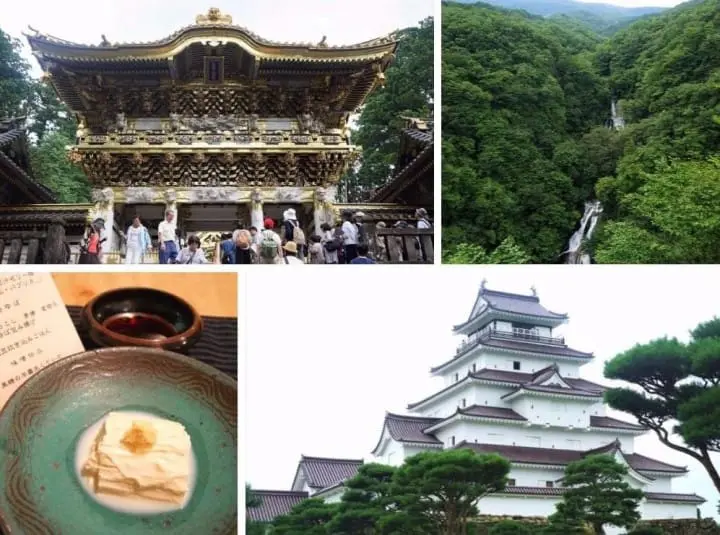

























![[Coupon Available] Attention Overseas Winter Sports Fans! Nagano's Sports Depot Has Evolved](https://resources.matcha-jp.com/resize/720x2000/2026/01/05-254819.webp)
![[2 hours from Tokyo ] 10 Quiet and Breathtaking Views of Mount Fuji in Yamanashi Hokuto City , Yamanashi - Part 2](https://resources.matcha-jp.com/resize/720x2000/2025/12/16-253037.webp)

![[Reopening in March 2026] Ikoma Sanjo Amusement Park Park, 45 minutes from Osaka , with free admission](https://resources.matcha-jp.com/resize/720x2000/2024/08/28-194409.webp)